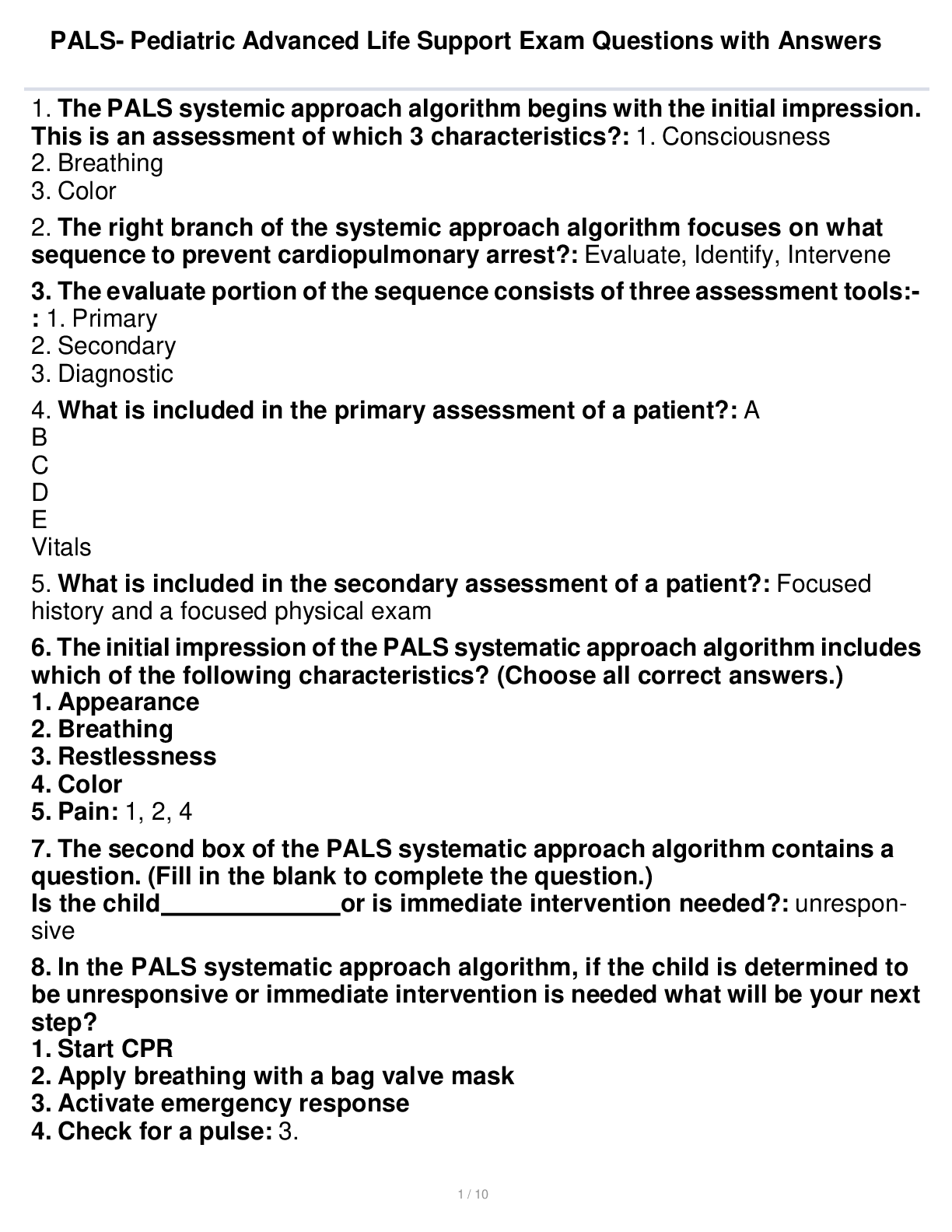Health Care > QUESTIONS & ANSWERS > Advanced Cardiovascular Life Support Exam Version B (50 questions) (All)
Advanced Cardiovascular Life Support Exam Version B (50 questions)
Document Content and Description Below
Advanced Cardiovascular Life Support Exam Version B (50 questions) Please do not mark on this exam. Record the best answer on the separate answer sheet. 1. What should be done to minimize interrupt... ions in chest compressions during CPR? A. Perform pulse checks only after defibrillation. B. Continue CPR while the defibrillator is charging. C. Administer IV medications only when breaths are given. D. Continue to use AED even after the arrival of a manual defibrillator. 2. Which condition is an indication to stop or withhold resuscitative efforts? A. Unwitnessed arrest B. Safety threat to providers C. Patient age greater than 85 years D. No return of spontaneous circulation after 10 minutes of CPR 3. After verifying the absence of a pulse, you initiate CPR with adequate bag-mask ventilation. The patient’s lead II ECG appears below. What is your next action? A. IV or IO access B. Endotracheal tube placement C. Consultation with cardiology for possible PCI D. Application of a transcutaneous pacemaker 4. After verifying unresponsiveness and abnormal breathing, you activate the emergency response team. What is your next action? A. Retrieve an AED. B. Check for a pulse. C. Deliver 2 rescue breaths. D. Administer a precordial thump. 5. What is the recommendation on the use of cricoid pressure to prevent aspiration during cardiac arrest? A. Not recommended for routine use B. Recommended during every resuscitation attempt C. Recommended when the patient is vomiting D. Recommended only for supraglottic airway insertion 6. What survival advantages does CPR provide to a patient in ventricular fibrillation? A. Increases the defibrillation threshold B. Directly restores an organized rhythm C. Opposes the harmful effects of epinephrine D. Produces a small amount of blood flow to the heart 7. What is the recommended compression rate for performing CPR? A. 60 to 80 per minute B. 80 to 100 per minute C. About 100 per minute D. At least 100 per minute 8. EMS personnel arrive to find a patient in cardiac arrest. Bystanders are performing CPR. After attaching a cardiac monitor, the responder observes the following rhythm strip. What is the most important early intervention? A. Defibrillation B. Endotracheal intubation C. Epinephrine administration D. Antiarrhythmic administration 9. A patient remains in ventricular fibrilla [Show More]
Last updated: 3 weeks ago
Preview 1 out of 15 pages
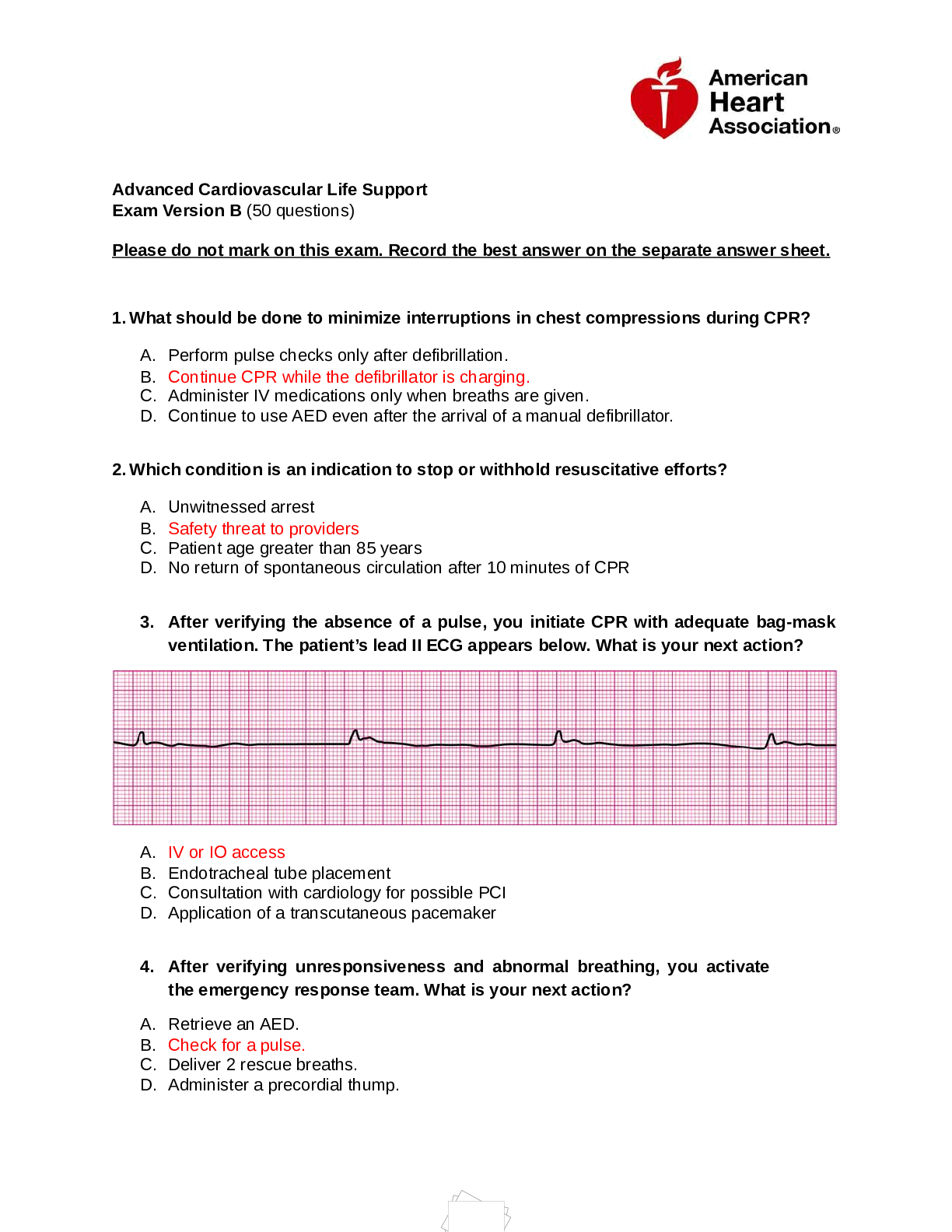
Reviews( 0 )
Document information
Connected school, study & course
About the document
Uploaded On
Jun 03, 2022
Number of pages
15
Written in
Additional information
This document has been written for:
Uploaded
Jun 03, 2022
Downloads
0
Views
349
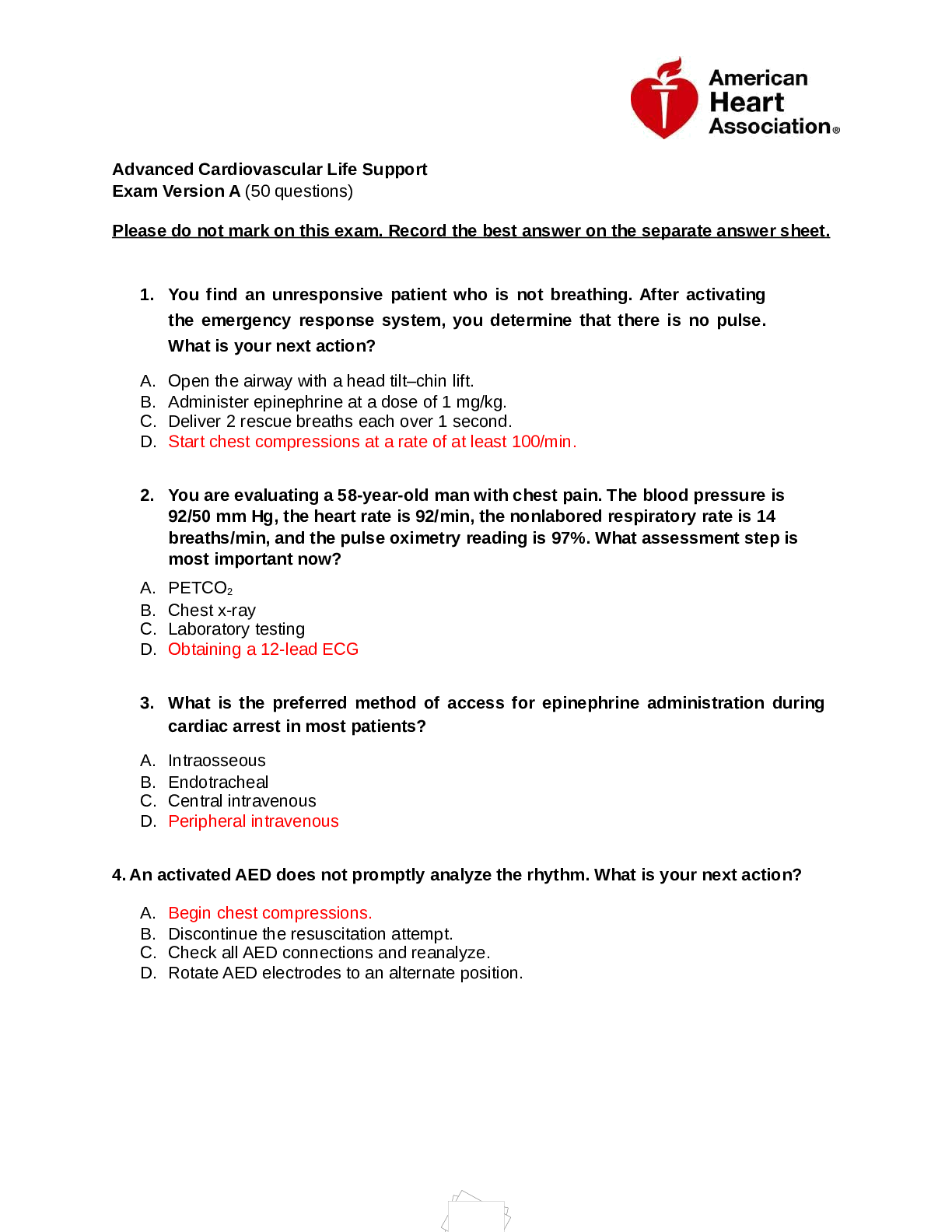

.png)
.png)
.png)
.png)
.png)
.png)




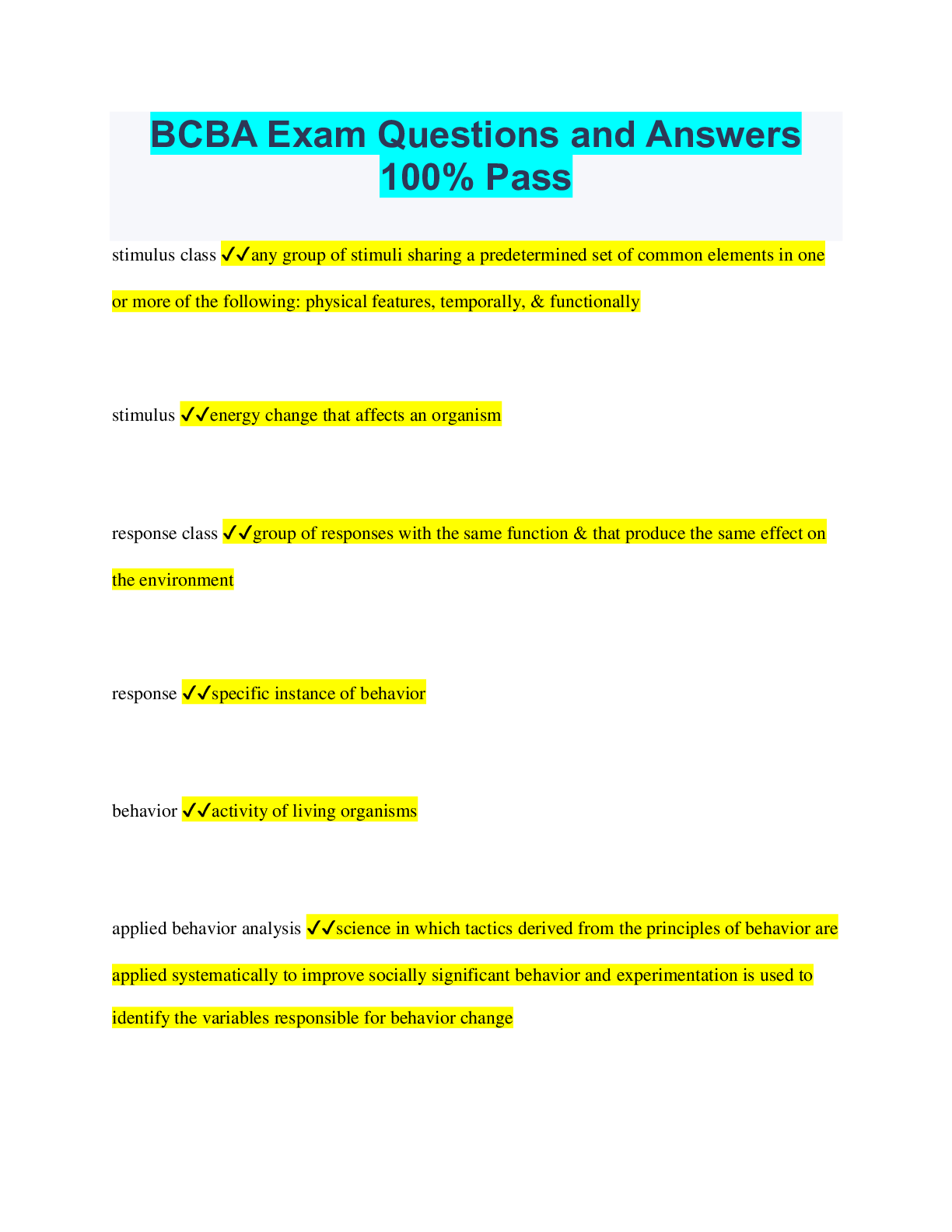
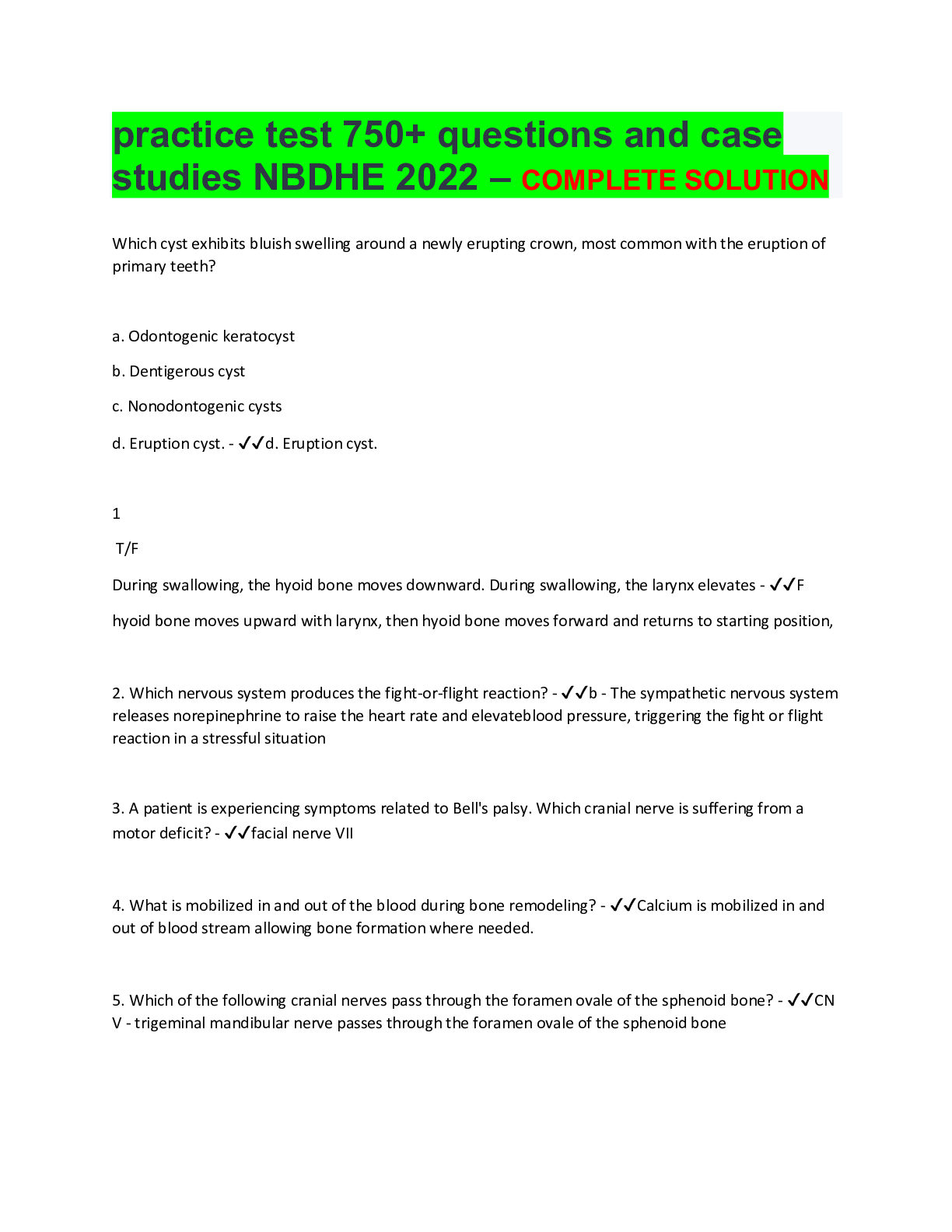
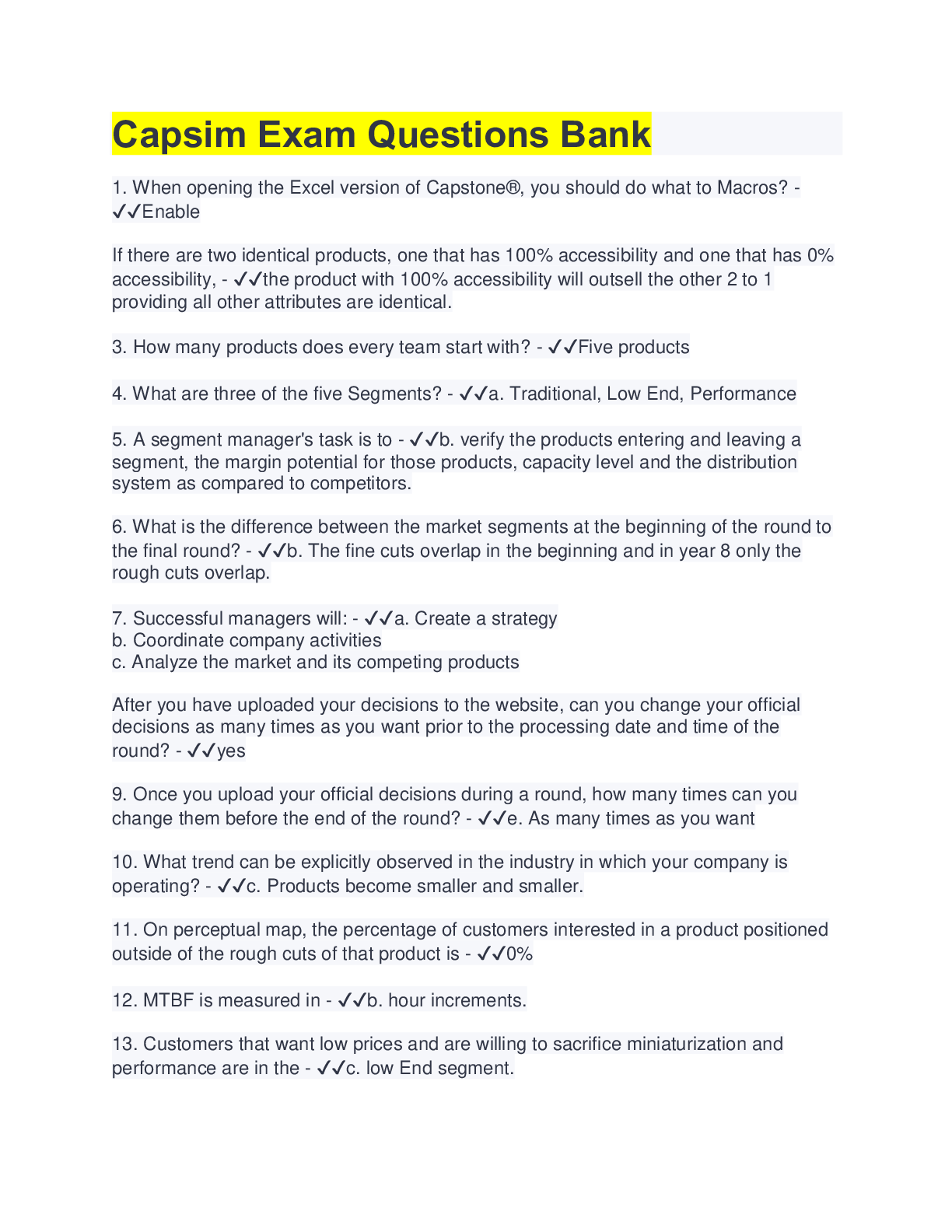


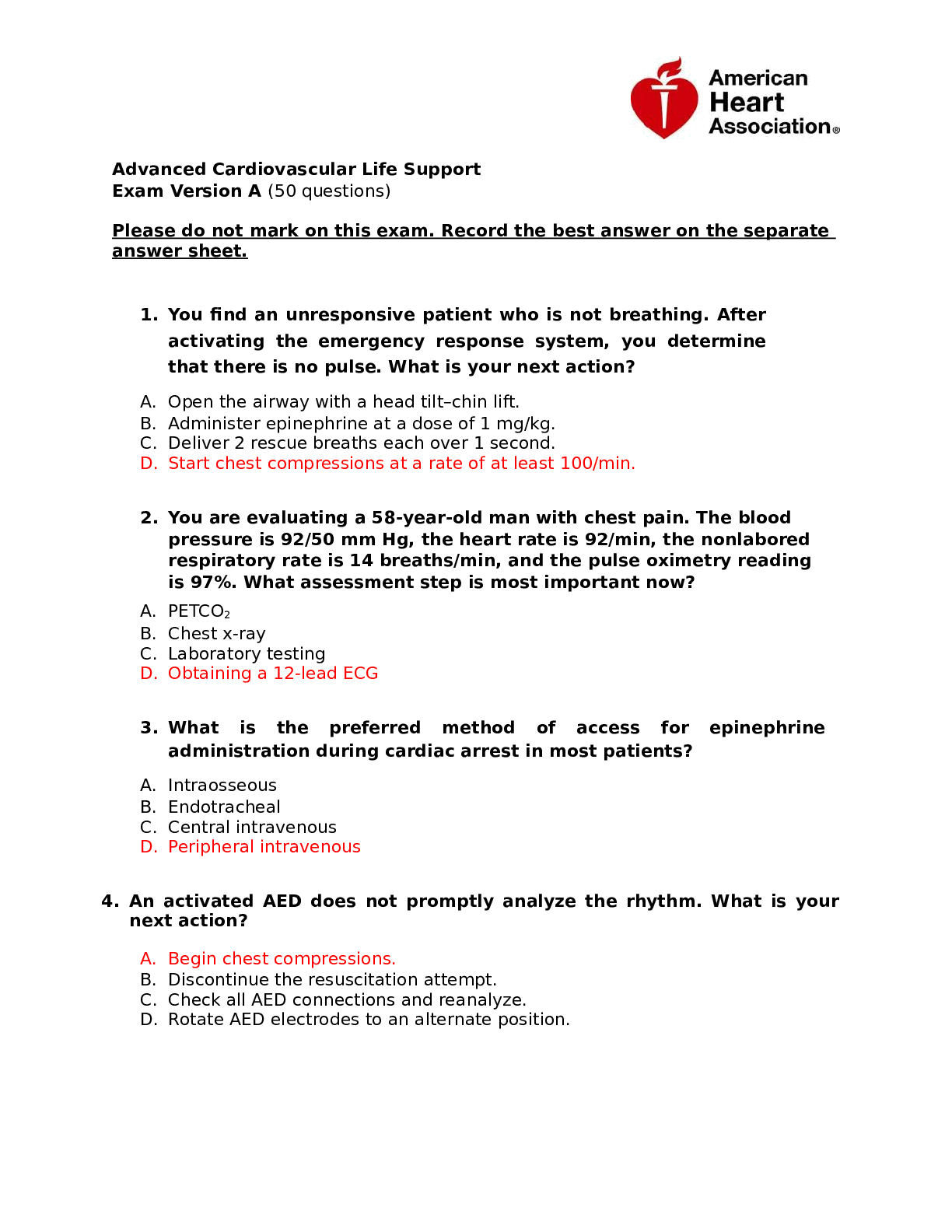

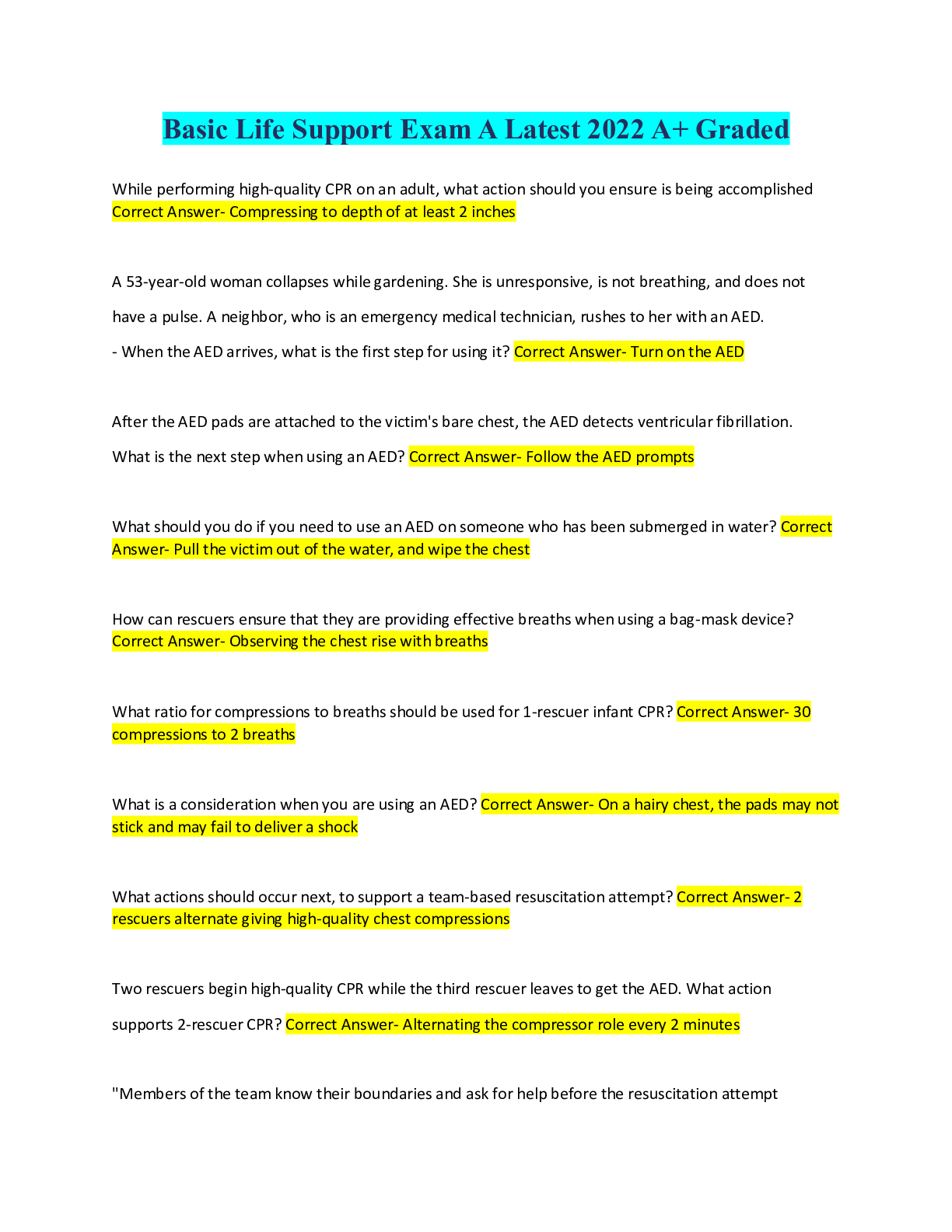
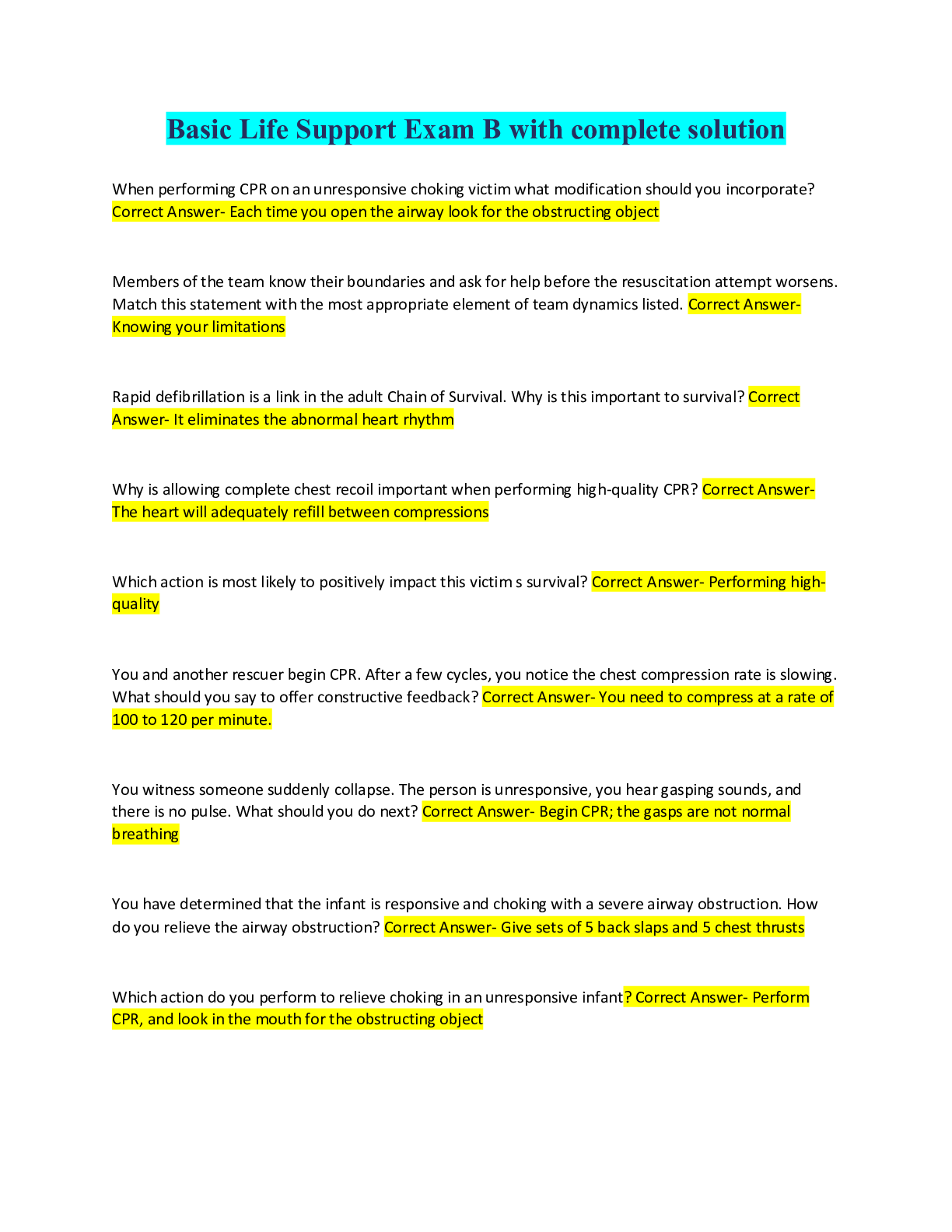
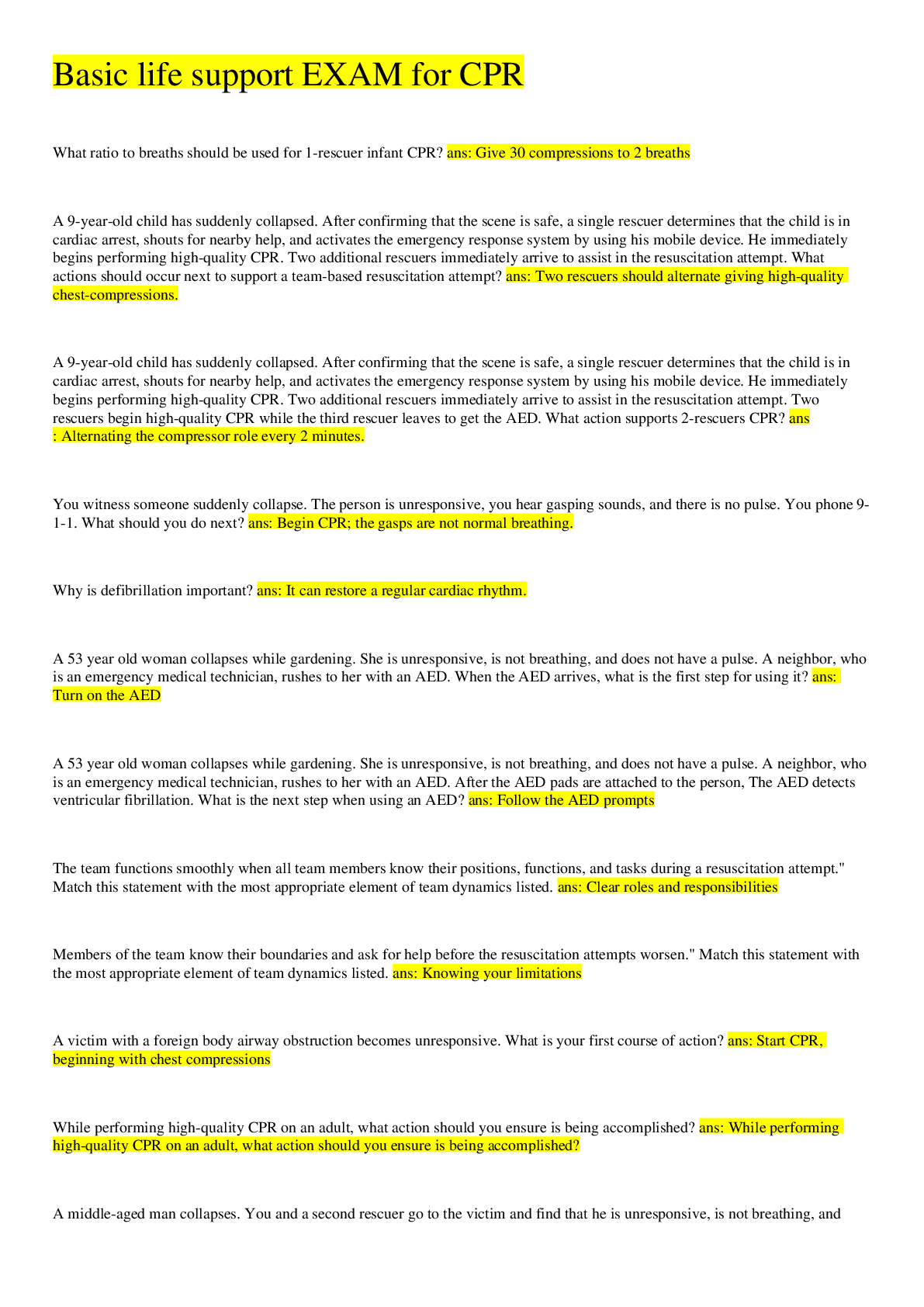

.png)
